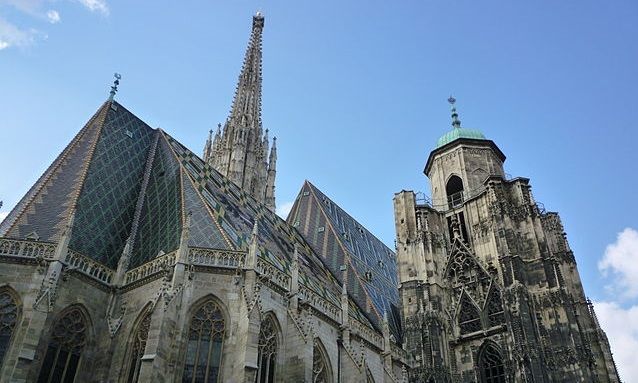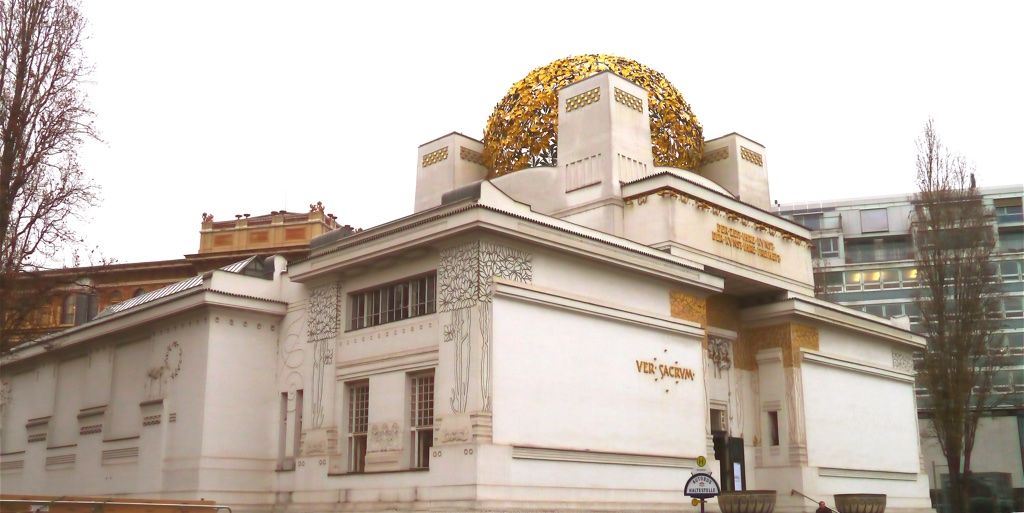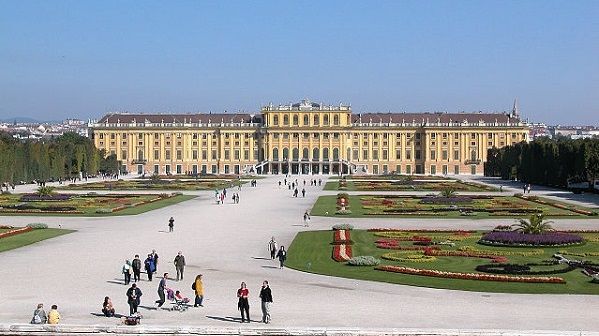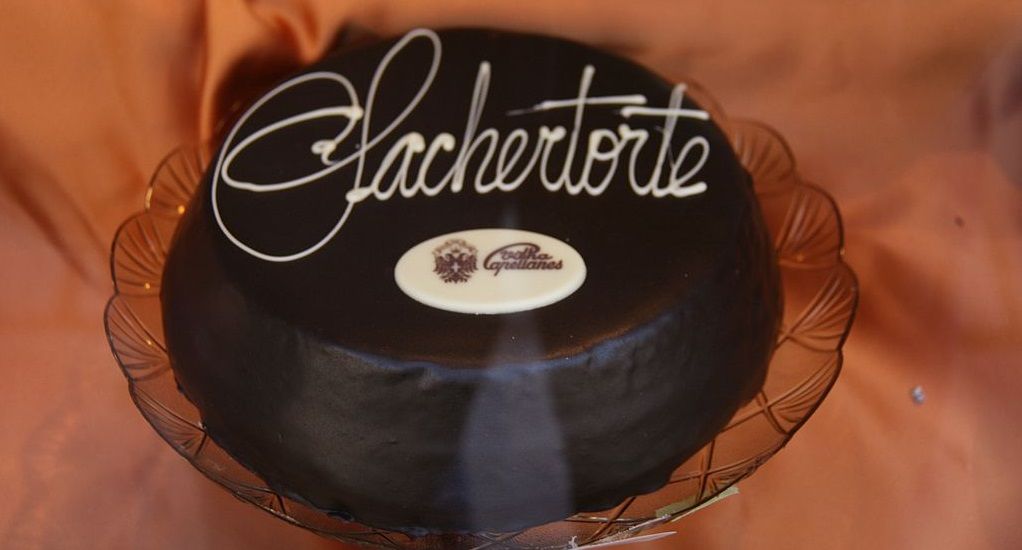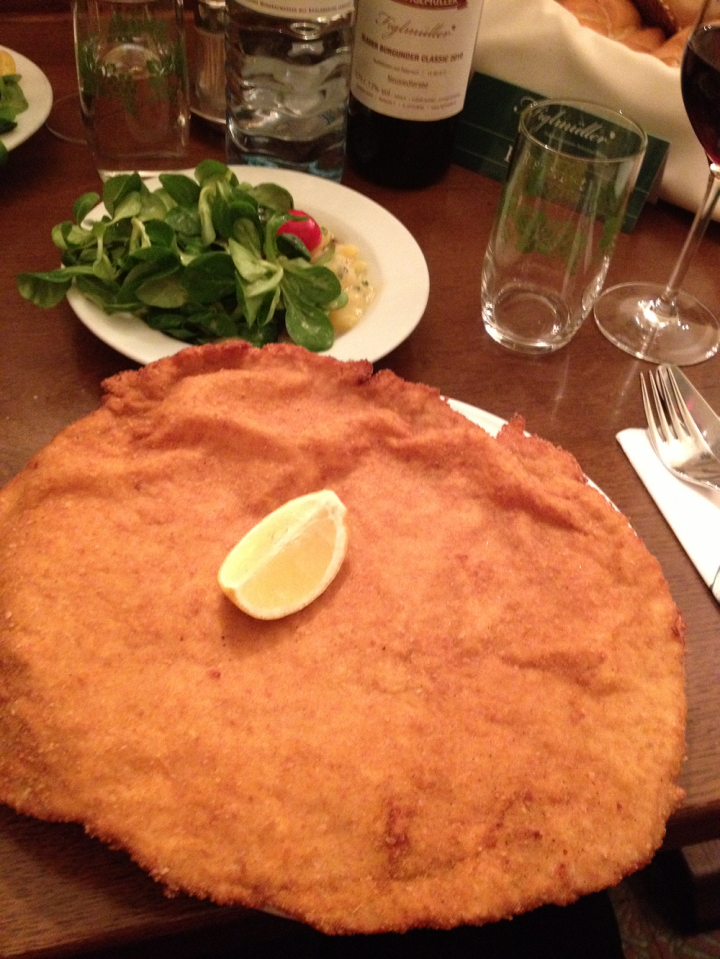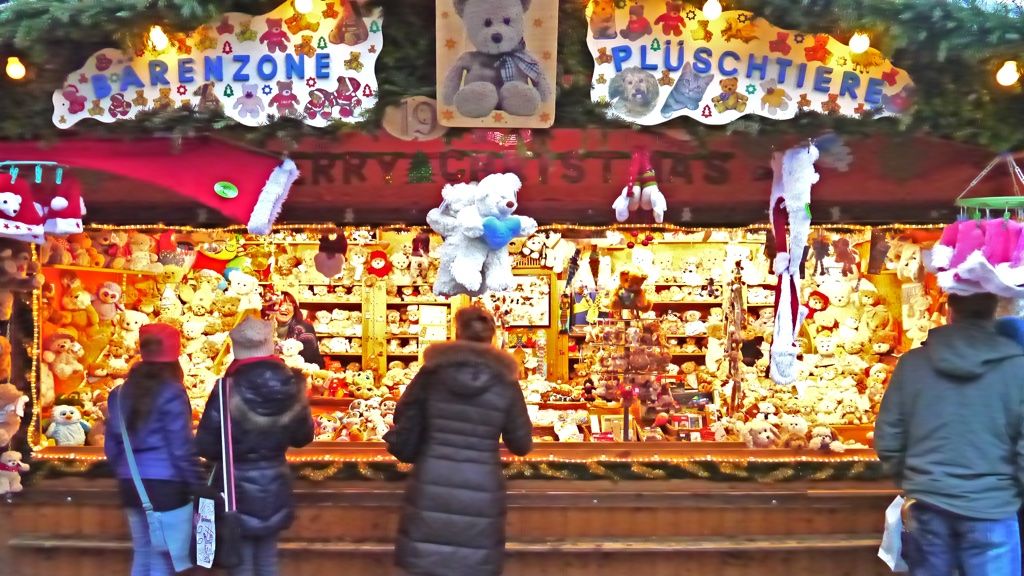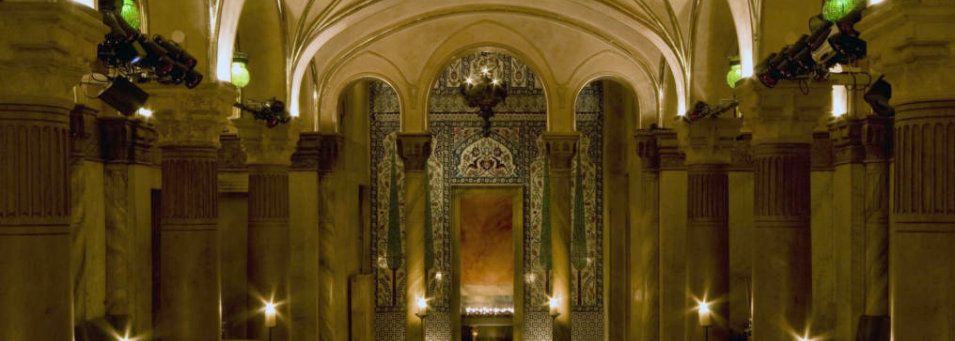Vienna is one of Europe's most majestic cities, crafted to be the monumental capital of a wealthy and powerful empire that once stretched throughout the middle of the continent and then quickly disappeared after the First World War. Wandering through its grand boulevards and rich buildings you can still feel the echoes of this grand past and rather unjustly this city has often been described as a bit conservative, haughty, reflective of a now distant past and prisoner of a faded splendour.
But that could not be more distant from the truth. Vienna is an extraordinarily modern and forward-looking city, a very green and progressive metropolis, which regularly comes on top of many surveys measuring the quality of life. It has a vibrant and active LGBT community that comes together for some spectacular events, such as the famous Life Ball, which is one of the world's top fundraising events. The Eurovision Song Contest victory of Conchita Wurst in 2014 has proudly showcased the modernity of Vienna and its LGBT community and it has put the city back on the map.
Vienna is a great destination in every season, but I just love visiting between mid-November and late December when the city literally transforms itself into a sparkling winter wonderland, with its amazing decorations and its world-famous Christmas Markets.
St Stephen Cathedral
St Stephen Cathedral is truly imposing. In respect of their rich heritage the Viennese have kept the city centre buildings low and so this beautiful Gothic masterpiece still towers over the city today as when it was started, in the 12th century. And it is a remarkably huge building indeed: it is over 100 metres long and its main spire (nicknamed 'Steffl' by the locals) towers 137 metres above Vienna. If you fancy a bit of exercise after feasting on a large Wiener Schnitzel then you may consider climbing the 343 steps to the top, to be rewarded with a great view over the city. From up there you may also get a closer look at the many gargoyles that adorn the building. In medieval times these grotesque figures symbolised the eternal struggle between good and bad, depicting men against lions and other bizarre creatures as a way to warn the illiterate medieval churchgoers of what they were up against, as well as to remind them of the role of the church to protect them from such evils. The Cathedral is also famous for its 230,000 coloured glazed roof tiles, which are laid to create the coat of arms of the city. The roof is very steep and for this reason it is seldom covered by the snow.
There are numerous bells on the tower – the most famous is called Pummerin and was originally cast in 1711 from cannons captured from the Ottoman invaders. It is said that the illustrious composer Ludwig van Beethoven, who lived in Vienna for 35 years and until his death in 1827 understood the totality of his tragic deafness when he saw the birds flying out of the tower because of the bells' tolling but was not able to hear the sound of the bells.
The inside of St Stephen is also impressive and spectacular. Though Gothic in its main style, there were many additions and renovations over the centuries, all adding to the richness of history contained in this place.
Art Nouveau Vienna
At the end of the 19th century Vienna was a pretty conservative place, even in the world of arts, perhaps predictably – given the classical grandeur and splendour the Austrian Empire was so keen to promote in its stately capital. The Vienna Künstlerhaus, which was set up to exhibit the local artists' works, was rather uninterested in embracing the new artistic tendencies that were flourishing elsewhere in Europe, in particular Impressionism and Art Nouveau. It was in 1897 that a group of local artists headed by painter Gustav Klimt founded the so-called Vienna Secession. The Secession Building, with its sparkling golden leaf-work dome was built in the same year by Joseph Maria Olbrich as an architectural manifesto for the new movement, as well as providing exhibiting space, a space that could properly feature the innovative and revolutionary Jugendstil – a type of Art Nouveau. Inside you will find the exceptional Beethoven Frieze, by Gustav Klimt himself, which is one of the most widely recognized artworks of this artistic and cultural movement.
More Jugendstil examples are to be found at the Belvedere Museum, in particular the uber-famous painting 'The Kiss', which is worth in itself a visit to this gallery. A further extensive batch of artworks of the period are housed in the Leopold Museum. Among the captivating items to see at both museums I'd especially point out the rich collection of Secessionist painter Egon Schiele, who depicted some pretty explicit male & female nudes for his time. Schiele was a pretty tormented character, something that is clearly visible in his very dark and atmospheric art. Some say that he was a repressed gay man and we know that he got into troubles in various stages of his life – and not just because of his raw art, before succumbing to the Spanish Flu epidemic in 1918 at the very early age of 28 years.
There are other expressions of Jugendstil to be found all around Vienna, but I would mention the two beautiful casino-style entrances of the former Karlsplatz metro station, designed by Joseph Maria Olbrich. Take a moment to admire the beautiful marble and wrought iron structures and the bright sunflower motifs, able to brighten even the dullest winter day.
Imperial Vienna
During the 19th century Vienna reached its maximum splendour under the Habsburg dynasty. Walking around Vienna and seeing its grandiose neoclassic buildings all around gives a clear impression of how the reigning dynasty shaped the city to be a showcase of its glory and power.
The Habsburg monarchs lived in the vast Hofburg Palace until their demise in 1918. Emperor Franz Joseph and his wife Elisabeth (the famous Sissi) lived in full Rococo-style splendour with their children and the entire royal household. From this very location they represented the realm of the Habsburg and directed its politics. Some parts of the Royal Palace are very old and date back to the 13th century and it is in this section that you can visit the Treasury, which includes the Emperor's Crown of the Holy Roman Empire, dating back to AD962.
Even with its mere 2,600 rooms, it became almost impossible to house the Habsburg's rich art collection solely in the Hofburg palace, so in 1891 the Kunsthistorisches Museum (Art History Museum) was built nearby. Inside you'll find artists from Raphael to Vermeer, Velazquez, masterworks by Rubens, Rembrandt, Titian and Tintoretto, plus a rich Egyptian and Near Eastern Collection.
During the summer months the Habsburg family would move to the Schönbrunn Palace, just outside the centre of the modern city. Considered one of Europe's most lavish and impressive Baroque palace complexes, it boasts a whopping 1,441 rooms! And especially if you visit outside the winter months, don't miss the extensive imperial gardens, which offered shade and leisure to the Emperor and his court.
Eat & Drink Vienna
Raise your hand if you have never heard of Viener Schnitzels! Arguably the most famous Austrian dish, it actually originated in Milan, where it's called 'cotoletta alla milanese'. Apparently an Austrian general who lived there in the 1850s brought the recipe over from Italy. If anything, the Viennese perfected the schnitzel, which can only (by law) be made with veal to be called as such. The traditional side dish isn't fries but a delicious potato salad, often garnished with cress. One of the most celebrated hangouts to try the local delicacy is Figlmüller, which has two restaurants that have been serving the dish for over 100 years. And believe me when I say that the schnitzels here are huge! Go early for dinner to avoid the lengthy queues. Another less known local dish you can try here is the Schweinsstelze (pork knuckle), though Schweizerhaus at the Prater is more famous for this dish. You will find a lot of dishes with a Hungarian flavour in Vienna, due to the historic link between the two cultures, for instance the awesome goulashes and other paprika-rich soups that are a real treat in winter when the weather is freezing!
But the Viennese excel in the art of patisserie. Who hasn't heard of the Sacher Torte? It was in 1832 that Prince Metternich asked his court kitchen to create a special dessert for a reception. However due to the illness of the chef, it fell to the 16-year-old apprentice Franz Sacher to whip something up in a hurry. And so the gorgeous glossy chocolate cake with its rich apricot jam filling was born. Franz's son opened a hotel and what's more traditional than having a slice of the delicious torte in the homonymous Sacher Hotel?
The Viennese have also perfected the art of the café. It is totally acceptable to spend hours and hours sitting in a café, eating cake and chatting to friends, do business or just read. And who can blame them? For this reason Viennese cafes are often amazing and spectacular places. One of my favourites is the grandiose , which opened in 1876 and has been since then a meeting place for the local intellectual and political scene. Habitual customers of this establishment were Sigmund Freud, Adolf Hitler, Vladimir Lenin, Josip Tito and Leon Trotsky, to name a few. Sit down, order an apfelstrudel, a hot chocolate with schlagobers (whipped cream), listen to the live piano music and wonder who may have sat in your spot in times past.
Christmas Vienna
Vienna is a great destination to visit year-round, but in the month of December the city literally sparkles with its famous Christmas markets (Christkindlmarkt). There are three main spaces where they are held, but my favourite is the one in front of the Rathaus (City Hall) - Wiener Weihnachtstraum am Christkindlmarkt, which features over 170 stalls selling everything from stunning tree ornaments, small gifts and (of course) an extensive array of cakes and other delicious sugary treats. The whole area is decorated by thousands of twinkling lights and the imposing Rathaus building shines in festive glow.
There is another market in Maria-Theresien-Platz, between the Kunsthistorisches and the Naturhistorisches Museums, where you'll find around 70 booths offer traditional handicrafts and original gift ideas. If you want something more traditional, head to the Old Viennese Christmas Market at Freyung in the city centre. A Christmas market was held here as early as 1772 and today it is a place to buy handicrafts, splendid glass tree decorations, traditional mangers and ceramics.
There are other smaller markets too, such as the one in front of the Belvedere Museum and another at Schönbrunn, both set in the romantic backdrop of these spectacular palaces. It's fair to say that in Vienna from mid-November and until the big day itself you're never far from a Christmas market!
Apart from buying glass baubles and tree tops, people come to the Christmas Markets to have hot punch (Weihnachtspunsch). You will find innumerable stands serving the hot beverage in mugs that you hire and then return at the end of your visit. The punch is mostly red wine, brandy, rum and spices. On a freezing cold Viennese winter night it can properly defrost any market visitor!
The whole city becomes a sea of lights in December. The most beautiful street in this period is the Graben, which features the most impressive decorations. Also other central streets like Kärntner Strasse are lavishly decorated and the St Stephen's cathedral is fronted by an enormous Christmas tree.
LGBT Vienna
Vienna has a relatively small but very active LGBT community, as well as being a very open and tolerant city. Visitors will feel comfortable and at ease in any of the many cafés but if you want to spend some time in a dedicated LGBT space then you can head for Café Berg, which has been serving the community for two decades just north of the city centre and close to the Sigmund Freud Museum. Next to Café Berg you will find the Löwenherz LGBT bookstore with a vast range of titles for sale.
If the weather is not playing nice – or for whatever other reason you may come up with, there are some pretty awesome saunas in Vienna. My favourite must be Kaiserbrundl. This is a very old and in fact historical place – it opened in 1889 as Central Bathhouse and was one of the most distinguished locations in Vienna, attracting many illustrious figures of Imperial Vienna, including the brother of Emperor Franz Jozef, Ludwig Viktor, who was known to indulge in 'man to man' activities... After a period of decline and neglect this amazing and grand building, with its arabesque marble columns, oriental motifs and frescoes was converted into a gay establishment and it is possibly the most spectacular sauna you'll ever visit.
In the evening there are quite a few interesting venues to choose from. Felixx Bar, near the Musuem Quarter () has been open for over a decade now and it welcomes its guests with a stunning chandelier that's almost 150 years old. There are also some nice and cosy areas for more romantic meetings. The same people in charge of Felixx also manage The Village, which is a bit more hectic and upbeat, as well as Why Not which is the oldest club in Vienna, with several events every weekend. For bears and a more charged environment, head to a Pitbull night - with regular events at Club Titanic.
Vienna has a fairly interesting calendar of events. If you're into big circuit parties you may want to keep an eye on the Circus Party which consists of two or three huge party weekends every year and attracting clubbers from far & wide.
Every year in mid-June Vienna celebrate Pride with the Regenbogen (Rainbow) Parade now in its 22nd year. The parade starts at the Sigmund Freud Park which over the Pride weekend is transformed into a space for community organisations to showcase their activities, with music and live stage performances to keep everyone entertained. Balls are a Viennese tradition and so in January every year a key event in the city's LGBT calendar is the Regenbogen Ball, which is not only one of the most successful balls in Austria, but it has also established a reputation for being the ball-season's highlight for the gay, lesbian, and transgender community. And all this goes in support of well deserving charity organisations. And talking of balls, in June 2017 Vienna will see the return of the Life Ball which is the biggest European charity event in the fight against HIV/AIDS and has seen prestigious celebrity guests, like Elton John, Catherine Deneuve, Liza Minnelli, Sharon Stone, Dita von Teese, Anastacia, Heidi Klum and Naomi Campbell to name a few. But a word of warning: only 3,780 tickets are released!

